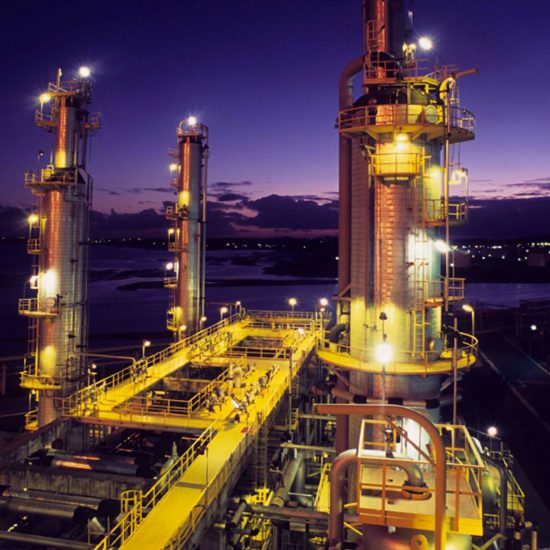The most requirement of explosion proof lighting is in a hazardous atmosphere. According to OSHA, a "hazardous atmosphere" is an atmosphere that may expose employees to the risk of death, incapacitation, impairment of the ability to self-rescue, injury, or acute illness from one or more of the following causes:
- Flammable gas, vapor, or mist over 10 percent of its lower flammable limit (LFL)
- Airborne combustible dust at a concentration that meets or exceeds its LFL
Classes & Groups:
There are three distinct classes and two "divisions" of hazardous environment that the lighting fixtures are divided:
- Class 1 are gases and vapors (it is the most explosive)
- Group A. Acetylene
- Group B. Hydrogen and manufactured hydrogen-containing gases
- Group C. Petrochemicals
- Group D. Methane
- Class 2 consists of combustible dust
- Class 3 consists of combustible fibers and "flying’s."
Divisions
Furthermore, two more divisions are divided into two hazardous conditions within each class:
Division I: In which ignitable concentrations of hazards exist under ordinary operating state and where the hazard is caused by frequent maintenance or repair work or frequent equipment failure.
Division II: In which ignitable concentrations of hazards are handled, processed, or used, but generally in firm containers or closed systems from which they can only escape through accidental rupture or breakdown of such containers or systems.
Intrinsically safe lighting
Intrinsically safe light is low consumption powered lighting, often incorporating batteries and rechargeable batteries. This light often uses low-voltage bulbs, such as light-emitting diodes (LEDs).In fact, explosion proof lighting dubai are based on designs, which restrict the quantity of electric energy used to non-incendive degrees so that sparks cannot happen in amperages, and voltages, which may result in explosions in toxic atmospheres. Intrinsically safe light is widely regarded as the unique way of hazardous locations. Intrinsically safe apparatus incorporates many mobile or hand movable light sources and running rechargeable batteries that may themselves be linked to low voltage A.C.Intrinsically safe devices do not need a stringent care routine because fire threat is not a problem. It does not require operators to flee chambers for analyzing and Programming instrumentation.Intrinsically safe apparatus never permit the ignition to take place in the first location.
Fixed lighting industrial
A typical stationary lighting industrial circuit could incorporate a temperature detector installed to restrict the quantity of energy into the lighting, dependent on the temperature. The led explosion proof light light is controlled by ambient temperatures but must meet high lighting criteria.
High-intensity discharge lamps
High-intensity, An electrical arc, began at the gasoline, heats and disappeared the salts to produce a plasma which intensifies the light resulting from the arc. These high-intensity lights create a light, each unit of electricity more visible than incandescent or fluorescent bulbs. A lot of this energy generates visible light instead of infra-red (heat) energy. On the other hand, the lights consume the gas (metallic crystals), and light levels fall by around 70 percent over 10,000 hours of usage
Explosion-proof Method
The explosion-proof Method isn’t confined to low-voltage lighting components. The wiring of the explosion-proof apparatus is well known and straightforward. The home of this light demands careful upkeep checks for leaks and damage.
Most specialists agree that this explosion-proof lighting entails more significant constant security dangers because the explosion is permitted to occur, and catastrophe can follow whether any imperfections have been overlooked.



